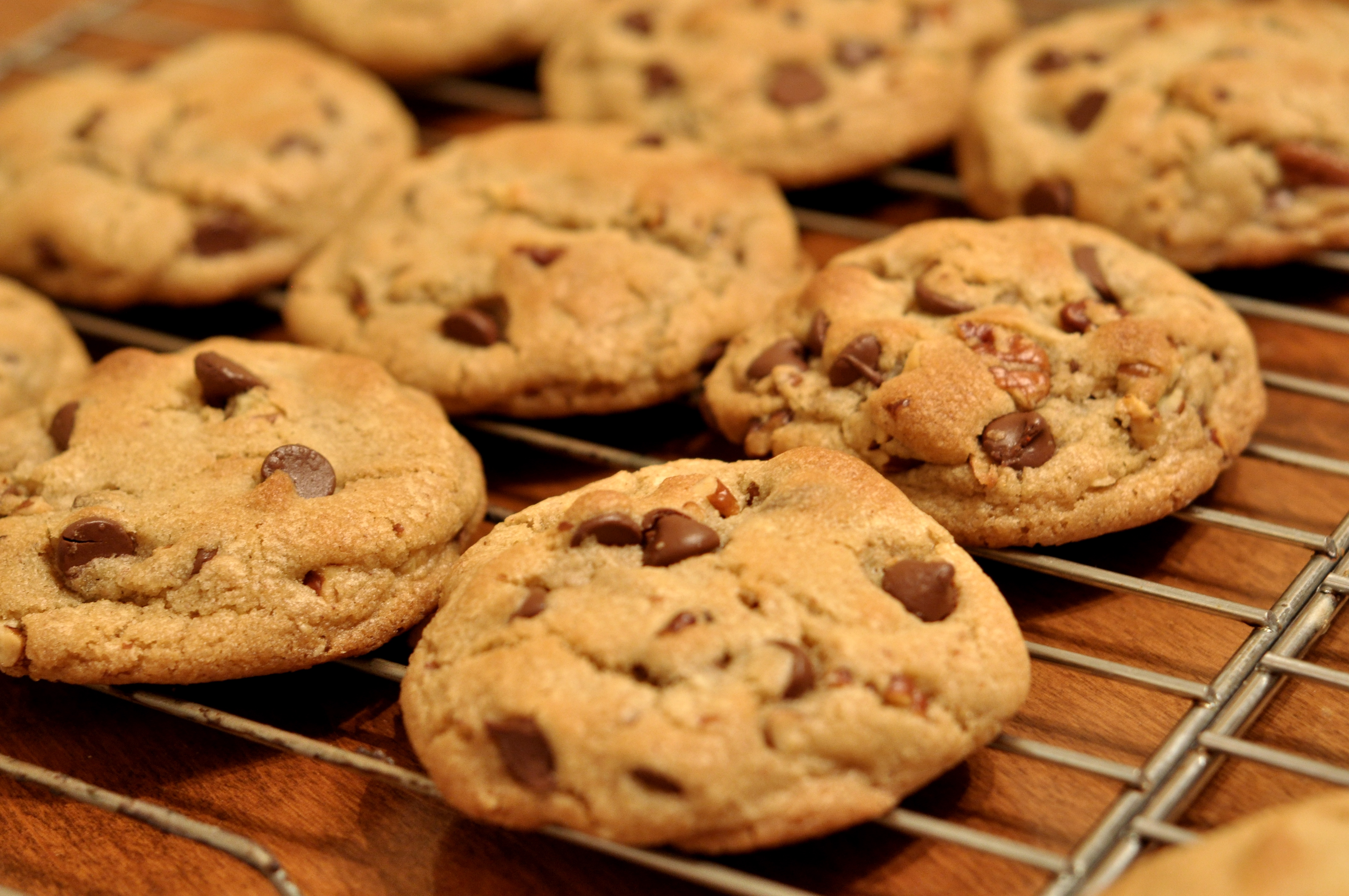Engineers' Chocolate Chip Cookies
or, Why Engineers Don't Write Cookbooks
Peter Flynn
 🔗
🔗This was circulated on the 'net so I have no idea who the original author was. I'd be happy to acknowledge it if they wish to step forward :-)
Your support for our advertisers helps cover the cost of hosting, research, and maintenance of this site
Ingredients
- 532.35 cm³ gluten
- 4.9 cm³ NaHCO3
- 4.9 cm³ refined halite
- 236.6 cm³ partially hydrogenated tallow triglyceride
- 177.45 cm³ crystalline C12H22O11
- 177.45 cm³ unrefined C12H22O11
- 4.9 cm³ methyl ether of protocatechuic aldehyde
- Two calcium carbonate-encapsulated avian albumen-coated proteins
- 473.2 cm³ theobroma cacao
- 236.6 cm³ de-encapsulated legume meats (sieve size #10)
Method
To a 2ℓ jacketed round reactor vessel (reactor #1) with an overall heat transfer coefficient of about 100 Btu/F-ft²-hr, add ingredients one, two and three with constant agitation. In a second 2ℓ reactor vessel with a radial flow impeller operating at 100rpm, add ingredients four, five, six, and seven until the mixture is homogenous.
To reactor #2, add ingredient eight, followed by three equal volumes of the homogenous mixture in reactor #1. Additionally, add ingredient nine and ten slowly, with constant agitation. Care must be taken at this point in the reaction to control any temperature rise that may be the result of an exothermic reaction.
Using a screw extruder attached to a #4 nodulizer, place the mixture piece-meal on a 316SS sheet (300×600mm). Heat in a 460°K oven for a period of time that is in agreement with Frank & Johnston's first order rate expression¹ or until golden brown. Once the reaction is complete, place the sheet on a 25°C heat-transfer table, allowing the product to come to equilibrium.
References
- 1. Frank, S and Johnston, R. Duration of heat-transfer baking, JACOS 21:55, October 1977.
Your support for our advertisers helps cover the cost of hosting, research, and maintenance of this site